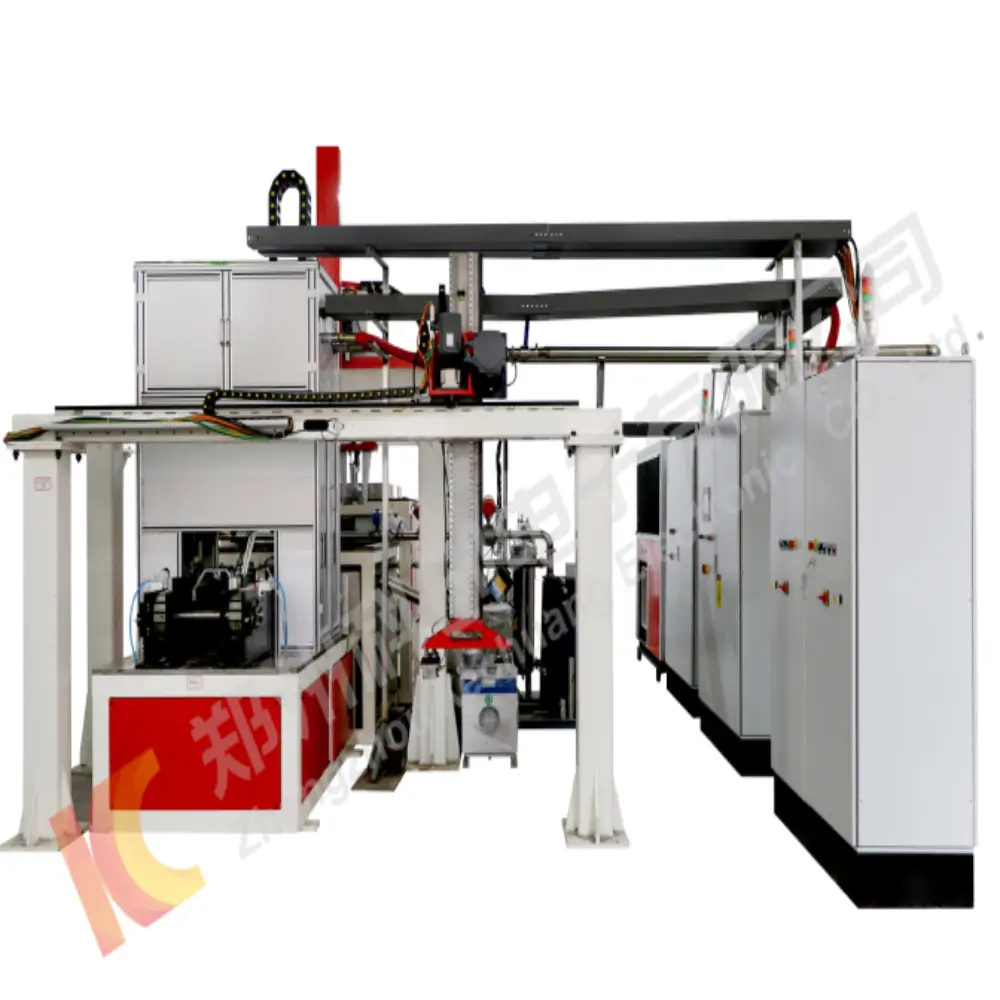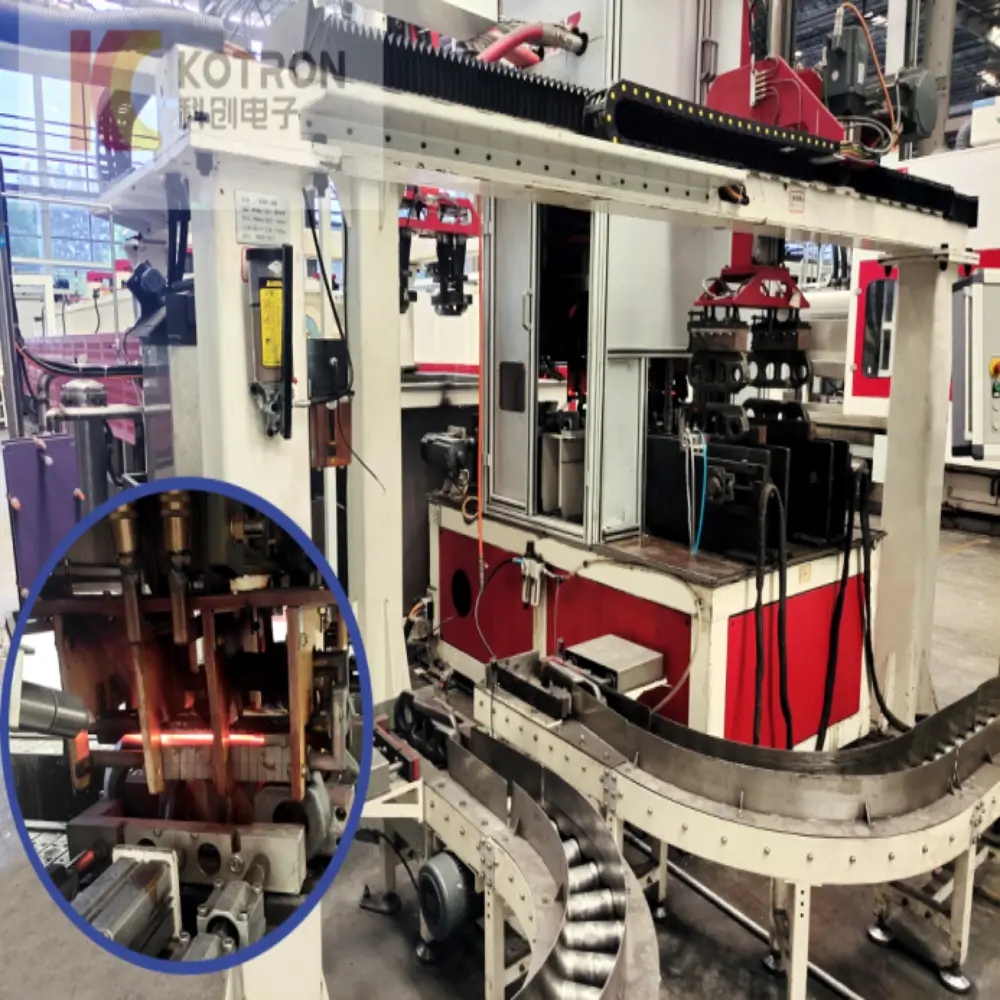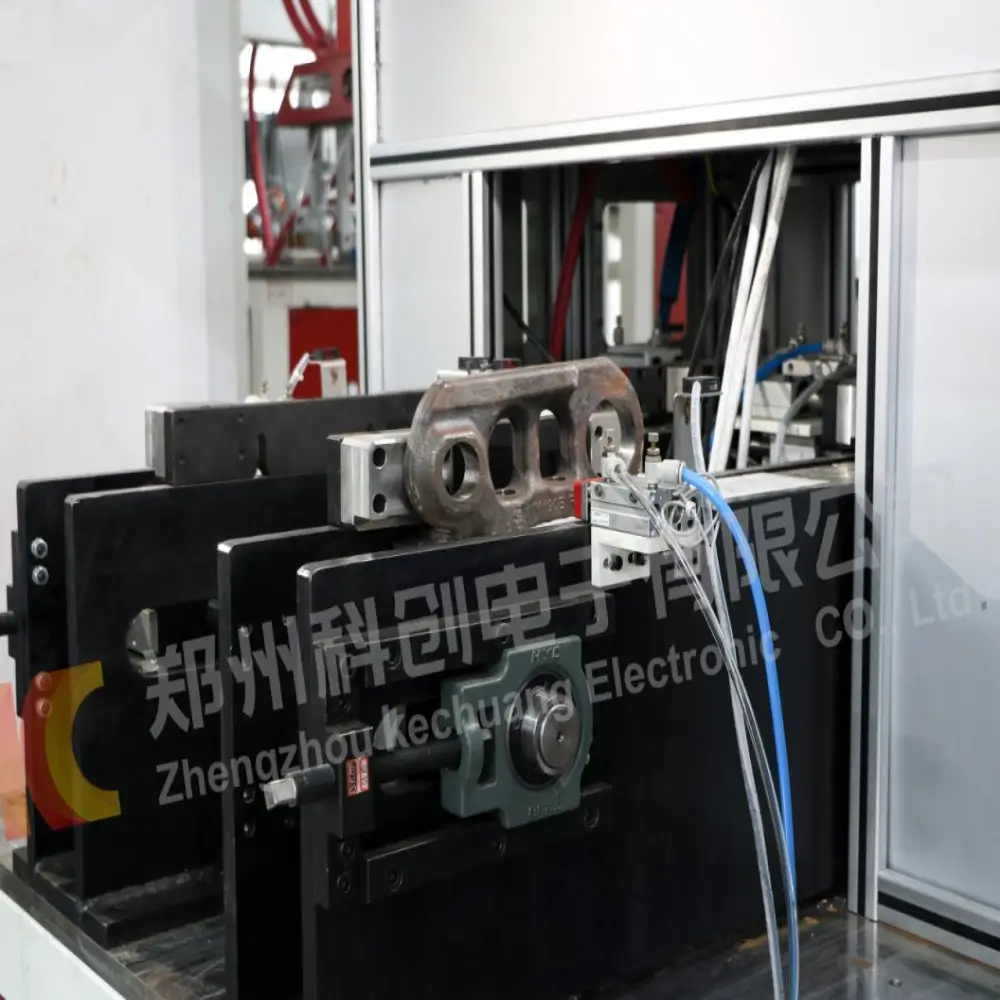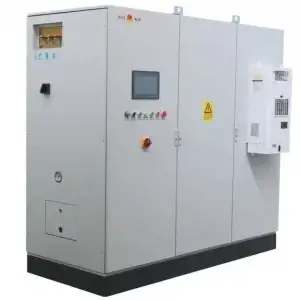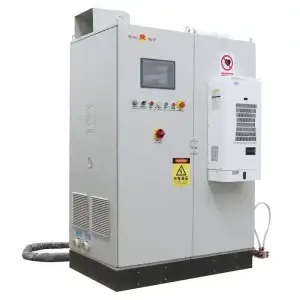Induction heat treatment of Track Chain Link serves as a core component in the manufacturing of crawler tracks for construction machinery (such as excavators and bulldozers). It is specifically designed for the induction quenching of track links (track plate connectors) to enhance their wear resistance, impact resistance, and fatigue life. The following sections detail the equipment’s composition, technical characteristics, and selection guidelines:
I. Core Components of the Equipment
| Module | Function Description |
|---|---|
| Induction Heating Power Supply | Medium frequency/ultra-audio frequency power supply (IGBT or MOSFET), with a power range of 200–800 kW and a frequency of 2–30 kHz, suitable for deep quenching of complex geometries in track links. |
| Quenching Machine Tool | Multi-station turntable or linear structure, integrated with automatic loading/unloading of track links, profile-matching positioning of inductors, rotational drive (10–50 rpm), and spray cooling system. |
| Cooling System | Closed double-circulation cooling (internal circulation: water cooling for power supply and coils; external circulation: constant temperature control for quenching fluid), with a flow rate ≥50 m³/h and pressure of 0.3–1.0 MPa. |
| Intelligent Control System | PLC+HMI control, supporting process parameter storage, temperature closed-loop feedback (infrared/optical fiber temperature measurement), and production data traceability (MES integration). |
| Detection Module | Online eddy current hardness detection (±2 HRC accuracy), metallographic sampling system, and magnetic particle inspection (crack detection). |
II. Technical Characteristics and Advantages
-
Deep Quenching for Complex Shapes
- Profile-Matching Inductor Design: Customized multi-turn coils or U-shaped inductors are designed according to the track link profile (pin holes, tooth surfaces, flat surfaces), achieving a hardened layer depth of 3–8 mm (hardness HRC 55–62) with a transition zone gradient ≤1 mm/HRC.
- Segmented Scanning Quenching: Different frequencies (high frequency for shallow layers + medium frequency for deep layers) are used for step-by-step processing of critical areas such as pin holes and tooth surfaces to ensure a balance between wear resistance and toughness.
-
Efficient Production and Flexibility
- Multi-Station Parallel Operation: A 4–6 station turntable design enables simultaneous completion of heating, quenching, tempering, and cooling, with a production cycle ≤30 seconds per piece (single track link weight 5–20 kg).
- Rapid Model Changeover: Modular inductors and fixtures (hydraulic quick-change) are compatible with different track link models (e.g., CAT, Komatsu, Sany specifications), with a changeover time ≤15 minutes.
-
Precise Temperature Control and Quality Assurance
- Temperature-Power Closed-Loop Control: Infrared thermometers monitor critical area temperatures in real time (±10°C accuracy), dynamically adjusting power and movement speed to avoid overburning or under-quenching.
- Intelligent Diagnosis: Real-time monitoring of water pressure, flow rate, and insulation status, with automatic shutdown and alarm for anomalies, and an MTBF (Mean Time Between Failures) ≥10,000 hours.
-
Energy Efficiency and Environmental Protection
- Energy Recovery System: Waste heat from quenching fluid is used to preheat cold water or heat workshops, reducing energy consumption by 20–30% (compared to traditional gas quenching).
- Zero Emission Design: Closed-loop quenching fluid circulation + oil mist collection device, compliant with ISO 14001 environmental standards.
III. Typical Technical Parameters
| Project | Parameter Range | Application Scenario |
|---|---|---|
| Power Supply Power | 300–600 kW (medium frequency), 200–400 kW (ultra-audio frequency) | Excavator track links (35–50 kg class), bulldozer track links |
| Frequency Range | 2–30 kHz (programmable switching) | Hardened layer 3–8 mm, pin hole diameter Φ30–80 mm |
| Processing Efficiency | 20–40 seconds/piece (depending on quenching area complexity) | Annual production lines of 100,000–300,000 pieces |
| Hardness Uniformity | ≤±3 HRC | Heavy-duty working conditions in mines and construction |
| Energy Consumption Index | 0.8–1.5 kWh/piece (depending on material and layer depth) | Large construction machinery manufacturers, track fitting suppliers |
V. Selection and Usage Recommendations
(Note: The original Chinese numbering skips from “III” to “V,” likely a typo. The translation retains the original numbering.)
-
Process Requirement Analysis:
- Track link material (e.g., 40Mn2, 34CrNiMo6), hardened layer depth (3–8 mm), and critical wear-resistant areas (pin holes, tooth surfaces).
- Production scale: mass standardized production vs. multi-specification small-batch production.
-
Priority of Key Configurations:
- Multi-Band Power Supply: 2–10 kHz medium frequency for deep quenching, 10–30 kHz ultra-audio frequency for surface strengthening.
- Profile-Matching Inductor: Customized according to pin hole and tooth surface shapes to ensure uniform magnetic field distribution (energy density deviation ≤5%).
- Automated Loading/Unloading: Integration of robotic arms or conveyor belts to reduce manual intervention.
-
Maintenance and Cost Control:
- Daily inspection of quenching fluid concentration (refractometer), monthly cleaning of inductor scale.
- Use of domestic quenching media (such as PAG) instead of imports, saving approximately 30% in annual costs.
